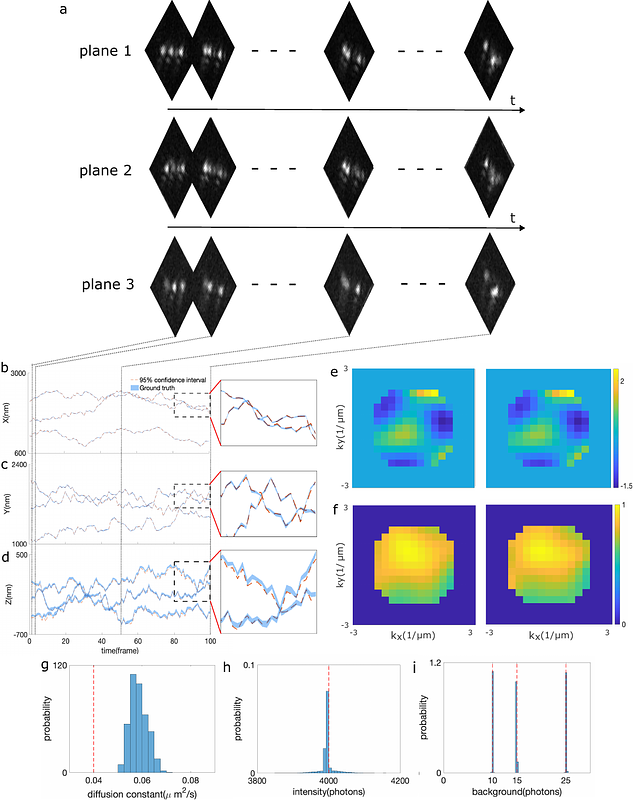Simultaneous particle tracking, phase retrieval and point spread function reconstruction

Simultaneous particle tracking, phase retrieval and point spread function reconstruction
Fazel, M.; Hoseini, R.; Mahmoodi, M.; Xu, L. W. Q.; Saurabh, A.; Kilic, Z.; Antolin, J.; Scrudders, K. L.; Shepherd, D. P.; Low-Nam, S. T.; Huang, F.; Presse, S.
Abstract3D tracking and localization of particles, typically fluorescently labeled biomolecules, provides a direct means of monitoring cellular transport and communication. However, sample-induced wavefront distortions of emitted fluorescent light as it passes through the sample and onto the detector often yield point spread function (PSF) aberrations, presenting an important challenge to 3D particle tracking using pre-calibrated PSFs. PSF calibration is typically performed outside cellular samples, ignoring sample-induced aberrations, which can result in localization errors on the order of tens to hundreds of nanometers, ultimately compromising sub-diffraction limited tracking. In practice, correcting sample-induced aberrations currently requires sample-specific hardware adjustments, such as adaptive optics. Yet, information on sample-induced aberrations and PSF shape can be directly decoded from data collected using a 3D imaging setup. To this end, we propose a framework for simultaneous particle tracking, pupil function learning, and PSF reconstruction directly from the input data themselves. To accomplish this, we operate within a Bayesian paradigm, placing continuous 2D priors on all possible pupil phase and amplitudes warranted by the data without limiting ourselves to a finite Zernike set--thereby allowing capture of intricate pupil phase details. We benchmark our framework using a wide range of synthetic and experimental data from static to diffusing particles, and generalize to multiple diffusing particles with overlapping PSFs. Further, as a result of simultaneous particle tracking, phase retrieval, and PSF reconstruction, we retrieve the pupil phase with errors smaller than 10% under a range of realistic scenarios, while restoring sub-diffraction limited localization precisions of 10-25nm and 20-50nm in lateral and axial directions, respectively.